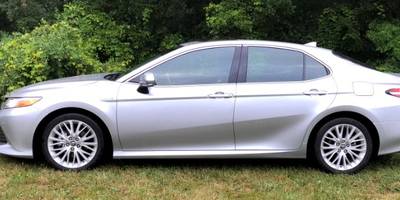Toyota is back in the game as we spend a week in the all new Camry Hybrid
Pros:
Much improved styling
Best in class interior quality
Transition between gas and electric nearly seamless
Cons:
Not as involving as some hybrids
Body styling could use more sculpting
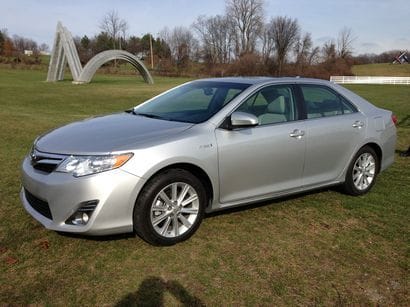
More than skin deep
Upon looking at the new for 2012 Toyota Camry Hybrid, I suspect many American drivers would have a hard time distinguishing between it and the previous generation. This, despite the fact that the sheetmetal is all new – which is a shame, because the changes that Toyota has wrought on its midsize sedan – especially the hybrid - are much more than skin deep.

2012 Toyota Camry XLE Hybrid
In terms of overall size, Toyota seems to have adhered to the phrase "if it ain't broke, don't fix it." Wheelbase, length and width (109.3 in., 189.2 in., and 71.7 in., respectively) remain the same. Height is up a scant 0.4 of an inch; while its front and rear track remain unchanged at 62 and 61.6 inches. So much for the similarities, as this is where they stop.

Under the hood, the new Camry Hybrid sports a highly revised version of Toyota's Hybrid Synergy Drive powertrain, starting with a new inline-four Atkinson cycle engine that displaces 2.5-liters. Output from the four-pot is 156 horsepower and 156 lb.-ft. of torque.
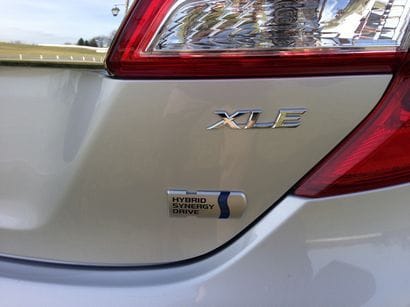
Sharing power duties is an AC Synchronous Electric Motor that produces 141 horsepower (105 kW@4,500 rpm) and 199 lb.-ft. of torque. Together they're capable of producing 200 net horsepower.
Fuel efficiency numbers are also up, with the XLE achieving an EPA-estimated 40/38/40 city/highway/combined mpg, while the lighter LE manages an EPA-estimated 43/39/41city/highway/combined mpg (our observed fuel economy in mostly around-town brisk driving was a satisfying 35 mpg).

In addition to the new engine, an electric engine coolant pump and air conditioning compressor have been added to the vehicle's previous electric power steering system, eliminating the need for power-draining accessory drive belts.
Other changes include the greater use of high-strength steels, resulting in a 155 pound weight savings between the 2011 model and the 2012 XLE and 245 pound weight reduction when comparing the 2011 version with a 2012 LE.
Toyota was also able to increase trunk capacity by 2.5 cubic feet (for a total of 13.1) by relocating the battery pack (it's still located in the rear bulkhead, so only the right rear seat flips forward and, even then, only a narrow pass-through is offered).
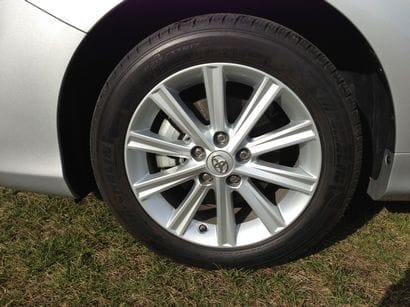
Exterior
Outside the 2012 Camry Hybrid wears all-new sheetmetal. Although at least from a distance it bears more than a passing resemblance to its predecessor, upon closer inspection every panel has been given a new tautness of line. Think of it as bringing the older model's soft lines into sharper focus.
This is especially evident in both the front and rear fascias. This is particularly evident in front, where its more horizontal headlamp enclosures, narrower grille and larger lower air intake give it a very purposeful look. The only downside to the new hybrid is that very little sculpting has been done along its flanks, where it manages to retain the previous-generation's somewhat slab-sided look.
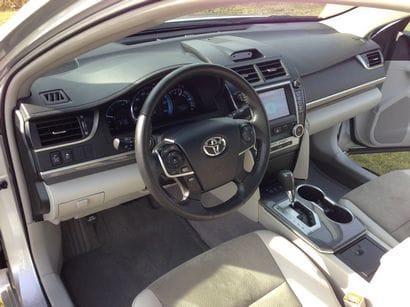
Interior
The real goodness in the latest Camry, however, lies inside where designers and engineers focused on making the cabin look and feel bigger. Examples include the reduced cross-section of the A and B pillars, sculpted-out front seatbacks and narrower door trim panels with control panels, all designed for a more spacious feeling and to give both front and rear passengers more room. This results in an increase in passenger volume from 101.4 cubic feet to 102.7 (in non sunroof-equipped models).

The most striking interior feature is the Camry's dashboard, with real stitching on its leading edge that stretches the width of the instrument panel while being interrupted only by the center stack. It is altogether understated and tasteful –words that we never thought would apply to this Toyota's interior.
The rest of the cabin is as modern-looking as anything in this segment with clear, easy to read hybrid-specific "optitron" instrumentation and controls that are both intuitive and silky smooth. A testament to the simplicity of its Entune infotainment system is that I was able to pair an iPhone to it without having to consult the owner's manual – a test in user friendliness that has become somewhat of a benchmark here.

We found the front seats to be both roomy and supportive. Three adults riding in the rear seat will also find the accommodations to be generous.
Even base Camry LE Hybrids come with a long list of standard features that includes power locks, windows and mirrors, cruise, metallic interior trim, auto on/off projector beam headlamps and variable intermittent wipers.

Also standard are such niceties as dual-zone automatic climate control, smart key with pushbutton start and Bluetooth hands-free phone capability.
Choosing the XLE trim adds, among other things, 17-inch alloy wheels (16-inch steel wheels are standard), a few chrome outside bits, fog lamps, heated outside mirrors, leather steering wheel and power driver's seat.

Also included in the package is Toyota's Display Audio which includes a 6.1-inch touch screen, iPod connectivity and control, phone book access and music streaming via Bluetooth.
Our XLE tester came with the optional Premium HDD Navigation with Entune which includes practically anything you could think of including a 7-inch touch screen along with a 10-GreenEdge speaker JBL audio system – one of the best sound systems we've ever encountered in the midsize class. It delivered crisp highs along with solid midrange and bass response even sounding splendid when playing back the compressed music files from an iPhone – no mean feat.

Other goodies included a subwoofer and amplifier, satellite radio with traffic, weather, fuel, stocks and sports information, HD radio with iTunes tagging, voice recognition and text-to-speech with customizable text responses.

On the road
In redesigning what has come to be America's most popular sedan, Toyota engineers developed an all-new rear underbody as well as rear-suspension geometry with the goal of improved straight-line stability, agility and improved ride comfort.
The result is that, even in hybrid guise, the Camry now has a much flatter trajectory through corners while still keeping road noise to a minimum (also the result of a 0.27 Cd). Acceleration, considering this is a hybrid, is brisk and currently at the top of the class while the brakes provide excellent feel – even when the regen kicks in - while bringing down the Camry's decreased weight with greater efficiency than most hybrids of this size.

And while we personally believe that very few Camry Hybrid owners will take maximum advantage of the "Newly developed vortex-generating aerodynamic fins based on F1 technology (that) are used on the side mirror base and rear combination lamps to enhance stability," it still demonstrates to us that even mentioning this in the model overview indicates engineers are bent on making this and future Camrys more than just transportation appliances, and we applaud that.
One more thing that we'd like to point out is that with this latest-generation Camry Hybrid, the "hybrid" portion should be thought of as something that works in the background, very rarely intruding on the driving experience. Torque off the line is decent, the re-gen brakes do their job, the CVT is as smooth and growl-free as any normal six-speed auto box we've driven, while the switch from battery to gas and back is seamless.
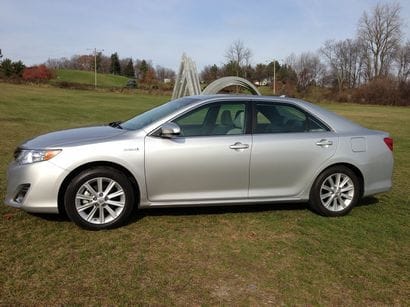
In other words, driving a Camry Hybrid no longer requires donning a hair shirt in order to enjoy the benefits of the more fuel efficient drivetrain.
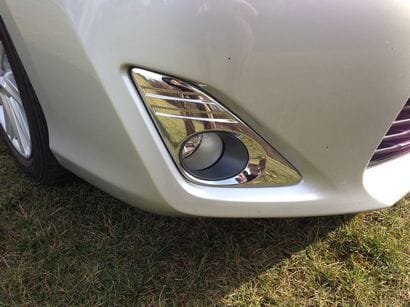
Pricing
Camry Hybrid new car prices begin with the base LE, at an MSRP of $26,660, including a delivery processing and handling fee of $760.
Our classic silver metallic XLE had a base price of $27,400. Adding the rearview mirror-located blind spot monitors ($500), convenience package (backup camera, homelink, alarm $695), safety connect package (emergency assistance, stolen vehicle locator, roadside assistance, automatic collision notification $450), leather package ($1,160), Premium Navigation with Entune ($2,600) and power tilt/slide sunroof ($915), brought the total price, including delivery, to $34,480.
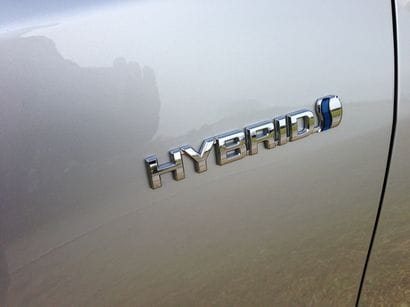
The Bottom Line
The 2012 Toyota Camry Hybrid represents a big step forward for hybrid buyers – especially those looking for more room, improved dynamics and an overall better driving experience than that of the Prius.
Drivers seeking a great deal of involvement will still be disappointed, although no more so than in any other Camry and, after all, that's not really what the Camry is all about. If you view it through the lens of its primary mission – that of family sedan – the latest version does this extremely well. The hybrid version only adds to the experience by pushing most of those exotic gas/electric functions into the background, allowing you to enjoy the vehicle while not becoming fixated on the hybrid processes. In other words, it's not a hybrid that happens to be a car, it's a real car that just so happens to be a hybrid
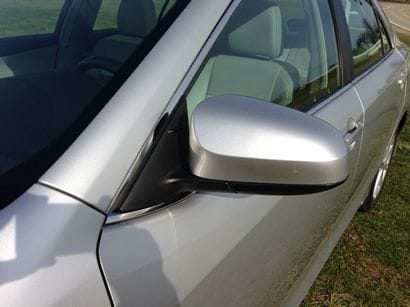
It also accomplishes this by shedding much of the Camry's previous car-as-appliance approach along with an interior that, dare we say (including the nice-looking grey-stained wood trim) would look quite at home in a Lexus.
Currently Camry owners will be pleased and we predict that many of them, as well as other buyers, will also be snapping up the hybrid version.



